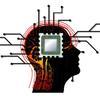Price:
3126 EUR
Contact
National University of Singapore
Description
This course is an introduction to using the Web for artistic creation. It is a "literacy" course designed to introduce you to the various core components that make the web such a powerful platform for art – art that is not only visual, but sonic, physical, interactive, and social. It will give you the basics (in terms of knowledge and code templates) to make things that run in browsers using:• Animation with graphics and sound,• Interaction with graphics and sound,Just as you don't need to be a mechanic to drive a car, you do not need to wait until you are an expert programmer before creating work for the web.There is a vast array of tools for making things for the web. Making things for the web is a process of constant learning and discovery – not one of knowing everything first and then making. It is also a process of ripping and mashing rather than writing everything from scratch. Getting comfortable with this process is the first step, and is the approach we take in this introductory course.By the end of this course, you will be making things with the real-world core components that give the web its potential for art, but you will have only just begun. More importantly, you will understand what you have to learn more about to accomplish your artistic objectives, be able to recognize things and be able to evaluate their value to you, and have a command of the terminology you need to search for and discuss your needs and interests with the huge community of people on the net with experience (and code chunks) to share.Why JavaScript and the Web?There are some excellent special-purpose coding platforms for artists out there such as Processing for interactive graphics, Chuck or supercollider for synthesis, graphical languages such as Max/MSP or PD for interactive sound and graphics. These platforms have extensive communities of people to share experience and code with. However, these special-purpose platforms are not standard web building and design tools.What they offer is a direct path to achieving a specific artistic objective, but it is at the expense of a more general applicability of language, tools, and skills that would allow you to interact with people in the web-based creative industries. They do a great job at "hiding" things you may not want to worry about as an artist, but dealing with a bit of the scaffolding is necessary if the web is the space you have chosen to embark on for developing your work.This course will take you through the basics you need to develop artistic content for the web using standard web tools – JavaScript, html, and several fundamental libraries. It will point you to exactly what concerns an artist most – making creative content. It will guide you and teach you what you can ignore for now in order to focus on artistic content, but will not prevent you from integrating with the vast world of the web and learning and using some of the scaffolding if and when you should need it later.Our basic approach to achieving this goal is to "throw you in to the deep end" with a set of code templates for meeting artistic goals – interactive graphical mobile applications using physical sensors, for example, and explaining simple things you can do immediately to explore and implement your own ideas.The advantages to JavaScript:• It is the language embedded in all browsers today.• It is general purpose, and makes no assumptions that limit your artistic objectives.• You can deploy all your work on the web for others to experience.• You only need to learn one language for writing both client and server code.• A *lot* of other people use it that you can share and communicate with.• It is a marketable skill.Thus, we are not restricting you to special-purpose tools that don't generalize well to the web – but that doesn't mean you will have to write a bunch of code not related to your artistic vision. The "template" technique used in this course is a "middle way" that gets you up and going fast, but provides a path to future growth and connection to the real world.You will learn to recognize patterns of code that you need not know how to write. This will provide you with a basic understanding of how things work in the real world (let's call it literacy). This will help you find, recognize, and use chunks of code that others share, and it will allow you to focus on code directly relevant to artistic content.This will give you the foundations you need to go on learning on your own by exploring the unstructured wealth of material available out there on the web to pillage and modify for your own work. That is how real web programmers work all the time, anyway!
Specific details
Category of Education
Computer Sciense and IT







 How to resolve AdBlock issue?
How to resolve AdBlock issue? 


Comments (0)